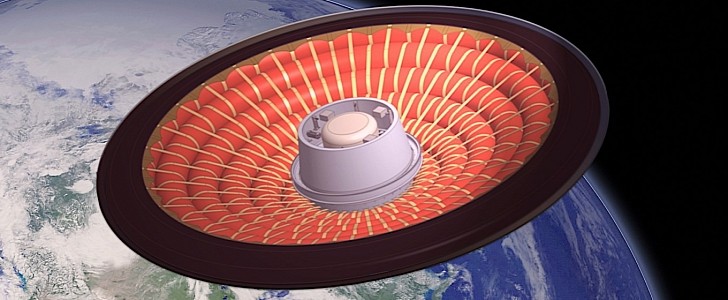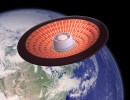Space exploration is a very tough business in many ways, but perhaps more so because of the technology that has to be invented for it to achieve its goal. From launch to landing, every single element needs to work perfectly to make a mission successful.
As far as the exploration of other worlds goes, landing is the name of the game, because only from the surface can we unlock secrets. And landing is impossible without the heat shield that protects a spacecraft’s cargo, be it robots or humans.
Take the Perseverance rover, for instance. The machine wouldn’t be on Mars right now if it weren’t for the perfect performance of the heat shield on its lander. That piece of hardware had to endure 2,550 degrees Fahrenheit (1,400 degrees Celsius) of heat on its way down, and it did.
Don’t go thinking the current heat shield tech is the best we can do, though. People are working on even better things, like the inflatable heat shield we have here.
In the purest NASA style, the mission, centered around a tech made by Jackson Bond Enterprises, is called Low-Earth Orbit Flight Test of an Inflatable Decelerator. That would be LOFTID, a piece of tech scheduled to take off with a polar-orbiting satellite in September 2022 for a test run.
The thing, when extended, will be 6 meters (20 feet) in diameter, a far cry from the largest one made to date, the one for the Mars Science Laboratory (4.5 meters/14 feet). This will help it slow down the spacecraft faster than current systems, at a higher altitude, and without as much heating.
When compressed, the shield will measure just 1.2 meters (4 feet) in diameter, and that is a major development, as it will allow it to be mounted on a rocket regardless of the size of its shroud, and increase the payload than can be delivered to another world.
The success of the inflatable heat shield could really open up the doors for a crewed mission to Mars, an adventure that still has countless hurdles to overcome.
Take the Perseverance rover, for instance. The machine wouldn’t be on Mars right now if it weren’t for the perfect performance of the heat shield on its lander. That piece of hardware had to endure 2,550 degrees Fahrenheit (1,400 degrees Celsius) of heat on its way down, and it did.
Don’t go thinking the current heat shield tech is the best we can do, though. People are working on even better things, like the inflatable heat shield we have here.
In the purest NASA style, the mission, centered around a tech made by Jackson Bond Enterprises, is called Low-Earth Orbit Flight Test of an Inflatable Decelerator. That would be LOFTID, a piece of tech scheduled to take off with a polar-orbiting satellite in September 2022 for a test run.
The thing, when extended, will be 6 meters (20 feet) in diameter, a far cry from the largest one made to date, the one for the Mars Science Laboratory (4.5 meters/14 feet). This will help it slow down the spacecraft faster than current systems, at a higher altitude, and without as much heating.
When compressed, the shield will measure just 1.2 meters (4 feet) in diameter, and that is a major development, as it will allow it to be mounted on a rocket regardless of the size of its shroud, and increase the payload than can be delivered to another world.
The success of the inflatable heat shield could really open up the doors for a crewed mission to Mars, an adventure that still has countless hurdles to overcome.







